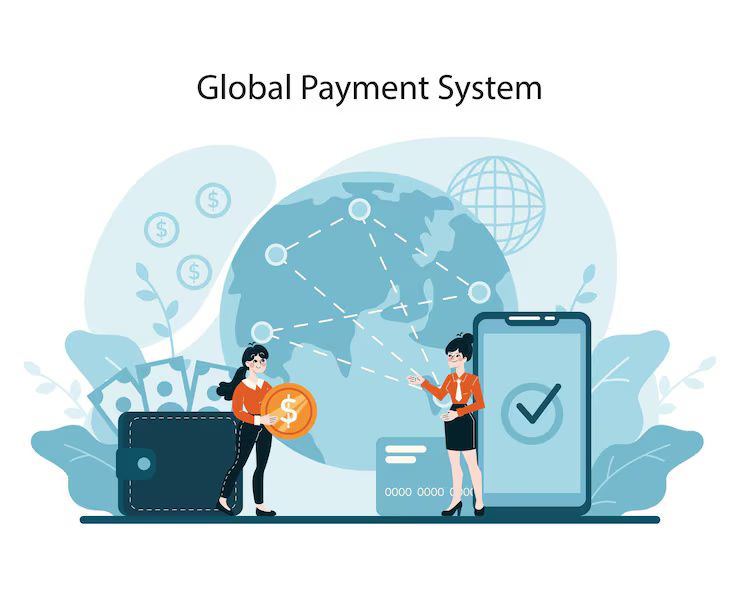Ultimate Guide to Receiving International Payments Easily and Safely
Receiving international payments refers to the process of accepting money from individuals, companies, or clients located outside one’s home country. This system exists because global business, freelancing, e-commerce, and cross-border trade require financial methods that can transfer funds securely across different currencies and banking networks.
Traditionally, international payments were handled only through banks using wire transfers. These methods were often slow, expensive, and required manual paperwork. Over time, new technologies and digital platforms have emerged to make cross-border transactions faster, transparent, and more accessible.

Today, various options such as online payment gateways, mobile wallets, global bank accounts, and international transfer services allow people to receive money from almost any part of the world. These solutions reduce delays, streamline currency conversion, and offer clearer fee structures. As global digital work continues to grow, the ability to receive international payments efficiently has become increasingly important for professionals and businesses.
Importance
International payments matter because they support global trade, digital work, remote services, and international remittances. As the economy becomes more interconnected, individuals and companies need reliable solutions for receiving money across borders.
Why this topic matters today
-
Growth of online freelancing and remote work
-
Expansion of global e-commerce and international client bases
-
Greater movement of workers sending money to families abroad
-
Rise of small and medium businesses participating in global markets
-
Faster digital banking systems reducing transfer delays
Who it affects
-
Freelancers and remote workers
-
E-commerce sellers
-
Exporters and importers
-
Service providers working with global clients
-
Families receiving remittances
-
Businesses paying employees or suppliers overseas
Problems it solves
Reliable international payment systems help address issues such as:
-
High bank transfer fees
-
Long processing times
-
Currency conversion losses
-
Limited access to global banking services
-
Unclear or hidden charges
-
Transfer restrictions and manual documentation
Modern systems create a smoother payment experience by offering transparent fees, multi-currency options, and online tracking.
Recent Updates
Several developments over the past year have changed how international payments are processed and managed.
Digital Payment Expansion (2024–2025)
Digital platforms have increased support for cross-border transactions due to rising demand from freelancers and small businesses. Many services improved speed and expanded supported countries in 2024.
Stronger Security Measures Introduced in 2024
Financial authorities encouraged platforms to adopt stricter verification processes, including enhanced identity checks and two-factor authentication, to reduce fraud risks.
Currency Conversion Improvements (Late 2024)
Some platforms introduced real-time exchange rate monitoring, allowing users to receive money with clearer and more predictable costs.
Growth of Virtual Global Bank Accounts
More payment services started offering virtual multi-currency accounts in 2024 and early 2025. These accounts enable users to receive payments in USD, EUR, GBP, and other major currencies without needing a local bank in those countries.
Adoption of Faster Cross-Border Payment Standards
Global financial organizations continued improving international transfer networks to reduce delays. This included better tracking tools that show where a transfer is in real time.
These updates reflect a broader trend toward safer, faster, and more cost-efficient international transactions.
Laws or Policies
International payments are regulated to ensure safe financial practices, prevent fraud, and protect users. Regulations vary by country but generally focus on security, transparency, taxation, and anti-money-laundering measures.
Common regulations affecting international payments
-
Foreign Exchange Management Rules:
Countries often regulate how foreign currency is received and reported. Individuals and businesses may be required to declare incoming payments depending on the amount and purpose. -
KYC and Identity Verification:
Platforms and banks must verify the identity of users to prevent fraudulent activity. -
Anti-Money-Laundering (AML) Standards:
Financial institutions monitor unusual or suspicious transactions and report them to regulatory authorities. -
Taxation Rules:
Certain types of international income may be subject to local tax policies, depending on the nature of work or business. -
Banking Compliance Guidelines:
Banks may require purpose codes or invoices when receiving large international payments.
Helpful overview of policy areas
| Area of Regulation | Purpose | Examples |
|---|---|---|
| Security & Identity | Prevents fraud | KYC, two-factor authentication |
| Cross-Border Control | Regulates foreign currency | Foreign exchange reporting |
| Income Reporting | Ensures legal compliance | Tax documentation |
| Transaction Tracking | Monitors unusual patterns | AML rules |
| Banking Procedures | Ensures safe transfers | Purpose codes, documentation |
These policies help create safer and more reliable financial systems for receiving cross-border payments.
Tools and Resources
Reliable tools and platforms make receiving international payments smoother and more transparent. Different solutions may suit different needs depending on transfer size, frequency, location, and fees.
Online Payment Platforms
These services allow freelancers, businesses, and individuals to receive payments from clients or customers globally:
-
PayPal
-
Wise (formerly TransferWise)
-
Payoneer
-
Stripe (for businesses and online stores)
-
Skrill
Bank Transfer Solutions
-
International wire transfers
-
SWIFT network transfers
-
Multi-currency bank accounts
-
Digital banking apps supporting foreign remittances
E-commerce & Business Payment Tools
-
Stripe Connect
-
Shopify Payments
-
Razorpay international payment gateway
-
Amazon and eBay seller payout systems
Remittance Services for Families
-
Western Union
-
MoneyGram
-
Remitly
-
WorldRemit
Helpful Online Resources
-
Currency conversion calculators
-
Transfer fee comparison websites
-
Budgeting and income tracking templates
-
International payment policy guides
-
Banking compliance checklists
These tools support secure and efficient payment processing for individuals and organizations.
FAQs
1. What is the safest way to receive international payments?
Using regulated financial platforms or banks with strong security measures is generally safest. These services follow compliance rules and offer secure verification steps to protect transactions.
2. How long does it take to receive international payments?
Processing time varies by method. Bank wires may take 2–5 business days, while digital platforms can process payments within hours or 1–2 days depending on the service.
3. Do all payment methods charge fees?
Most services charge some form of fee, which may include transfer fees, conversion fees, or withdrawal charges. Transparent platforms display charges before the transaction.
4. What information do I need to receive money from abroad?
Common requirements include your name, bank account details, SWIFT code, IBAN (if applicable), and platform-specific account IDs or email addresses.
5. Are international payments taxable?
This depends on your country’s tax laws. Income received from clients abroad may need to be reported, especially for business or freelance work.
Final Thoughts
Receiving international payments is now easier and faster thanks to advancements in digital banking and financial technologies. By understanding available methods, associated fees, and security practices, individuals and businesses can choose the most suitable option for their needs. Awareness of regulations and proper documentation also helps ensure compliance and smooth processing. As global work and online business continue to expand, reliable international payment systems will remain essential for supporting global financial activities.







